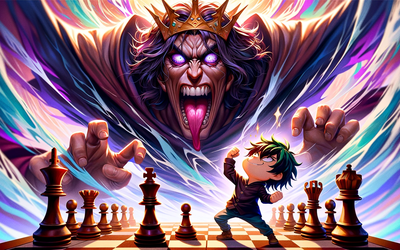
Level up your endgames Part 2: The Strengths and Weaknesses of the Minor Pieces
Hi Everyone! I’m back with the second part of my series on leveling up your endgame play. In my first section I discussed how whether a pawn is on a central or flank file can often make the difference between a win and a loss. In this section, I’ll touch on the strengths and weaknesses of each minor piece, and explain how you can use them best.Common knowledge has it that bishops tend to do better than knights when positions reach the endgame. The reason for this, is that the Bishop is a long range piece that does well with fewer pieces on the board, by exerting its influence on a larger swath of squares. Knights on the other hand, being short ranged maneuvering pieces, can often struggle to cover ground quickly enough, and get little use of their unique ability to jump over pieces.
While this logic is sensible, in my personal experience I’ve found so many exceptions to that idea, that I’d discard it as a general rule. Most notably, the knight typically becomes a stronger piece than the bishop even in an endgame if the pawns are localized on only one side of the board. In such positions, the knight’s ability to control both light and dark squares is more important than the bishop’s long range capabilities, and is usually the stronger piece.
Bishops
Bishops are extremely powerful long range pieces. At their best, they can work together with their opposite colored counterparts to pave the way for a pawn to promote without even straying from the safety of their home base. However, the bishop’s fatal flaw is that it can only control one color complex of squares. This explains why opposite colored bishop endgames have such strong drawish tendencies. If you set up a defense on a color complex that your bishop can control and your opponents can’t, how are they going to break through? Here are a few examples that illustrate the strengths and weaknesses of the bishop.
Knights
Knights thrive in different environments to bishops. Knights prefer to have all of the action localized on one side of the board, and can exploit weaknesses in such closed positions. A major weakness of a knight is its inability to “lose a tempo.” This seems trivial, but it actually hurts the knight significantly in some very simplified endgames. The reason for this is that wasting a move is an important technique for putting your opponent in a Zugswang position, where they have to ruin their position. Unlike every other piece on the board, the knight is not capable of making a pass move, where it still keeps control of the squares it previously did. Lets look at an example to see how this can cause it problems.
Thanks again for reading my post! I hope you learned something about the relative strengths and weaknesses of knights and bishops in the endgame. Next week I’ll be back with another post on how we can level up our endgame understanding together.
More blog posts by mmsanchezchess

How to Play against Lower Rated Opponents Part 1: Know your Advantage
Previously, I have written a series on how to do well and score upsets against higher rated opponent…
Level Up Your Endgames Part 3: 2 Rook Endgame Ideas You Have to Know
In my first section I talked about how the strength of passed pawns depends significantly on what fi…
Level up Your Endgames Part 1: The Importance of a Single File
Hey all! Today I'll be starting a new series on important endgame ideas that knowing will level up y…